Understanding Food Preservatives
Food preservatives are substances added to food products to prevent spoilage and extend their shelf life. They serve a crucial function in maintaining the safety, quality, and nutritional value of food, paving the way for modern food technology.
Role of Preservatives in Food
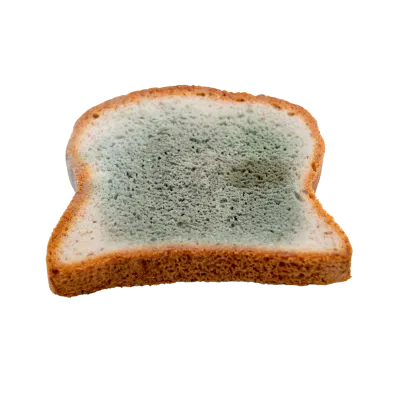
Preservatives play a vital role in food preservation by inhibiting spoilage caused by microorganisms like bacteria, yeast, and molds, which can lead to food poisoning and severe health risks such as botulism. These additives help reduce the risk of foodborne infections, decrease microbial spoilage, and preserve the fresh attributes and nutritional quality of food (EUFIC).
The table below outlines some key functions of preservatives:
| Function | Description |
|---|---|
| Microbial Control | Prevents the growth of harmful bacteria and molds. |
| Nutritional Preservation | Maintains the food’s nutritional quality and fresh attributes. |
| Quality Maintenance | Preserves taste, appearance, and texture. |
| Shelf Life Extension | Lengthens the time food remains safe and edible. |
The use of preservatives not only enhances food safety but also reduces food waste by prolonging the edible life of perishable items. Various preservation techniques can be employed, such as dehydration, UV-C radiation, freeze-drying, and refrigeration (Wikipedia). This highlights how essential preservatives are in modern food systems, ultimately lowering food costs by improving convenience and availability.
Historical Perspective
The application of food preservatives dates back to the late 19th century, but their usage became widespread during the 20th century. As food processing techniques evolved, so too did the variety and effectiveness of preservatives used in food production.
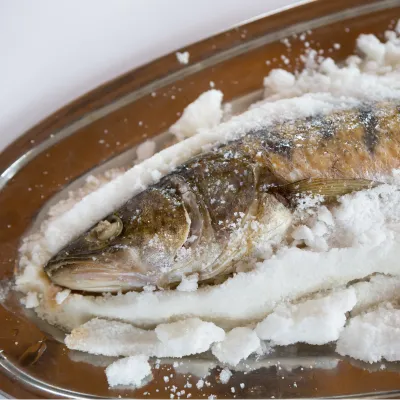
Early methods of preservation included salting, smoking, and fermentation. These traditional methods laid the foundation for contemporary preservatives that are more effective and reliable. With advancements in food science, synthetic and natural preservatives have been developed to meet the demands of a growing population while ensuring safety and quality.
Research indicates that weak acids like benzoates, propionates, and sorbates possess antimicrobial properties that not only inhibit microbial growth but also offer potential dental health benefits when used alongside fluoride (ScienceDirect).
Understanding the preservative role in food is essential for consumers, especially as they navigate the complexities of processed foods and learn to read food labels effectively.
Types of Food Preservatives
Understanding the different types of food preservatives is essential for anyone concerned about the ingredients in their processed food. Preservatives can broadly be categorized into antimicrobial and antioxidant types.
Antimicrobial Preservatives
Antimicrobial preservatives play a vital role in food preservation by preventing the growth of harmful microorganisms. These preservatives work by altering the environment of the food, which inhibits the activity of bacteria, yeasts, and molds. Common antimicrobial agents include:
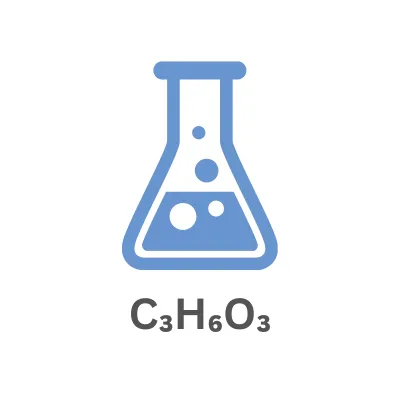
- Lactic Acid: Modifies pH levels to create an environment unsuitable for microbial growth.
- Nitrates and Nitrites: Used primarily in meats to inhibit bacterial growth.
In addition, weak acids such as benzoic acid, propionic acid, and sorbic acid are also effective. These substances can penetrate microbial cell walls, damaging cell membranes and affecting metabolism. The table below lists some common antimicrobial preservatives along with their sources:
| Preservative | Source | Use |
|---|---|---|
| Lactic Acid | Fermented foods | Dairy products, meats |
| Benzoic Acid | Natural sources (e.g., berries) | Soft drinks, fruit juices |
| Sorbic Acid | Sorbates from fungi | Cheeses, baked goods |
| Nitrites | Processed meats | Sausages, cured meats |
Antioxidant Preservatives
Antioxidant preservatives protect food from oxidation, which can lead to spoilage, rancidity, and loss of quality. Oxidation occurs when food is exposed to air, resulting in unpleasant flavors and nutritional loss. Some common antioxidants include:
- Ascorbic Acid (Vitamin C): Prevents color and flavor loss in fruits and vegetables.
- Tocopherols (Vitamin E): Extends shelf life by preventing lipid oxidation.
By incorporating antioxidants into food products, manufacturers can improve the longevity and nutritional profile of various foods. A list of common antioxidants and their uses can be found in the following table:
| Antioxidant | Use | Food Products |
|---|---|---|
| Ascorbic Acid | Preserves color and freshness | Juices, canned fruits |
| Tocopherols | Prevents spoilage in fats | Cooking oils, nut products |
| BHT & BHA | Prevents oxidation in processed foods | Snacks, preservatives |
Natural vs. Artificial Preservatives
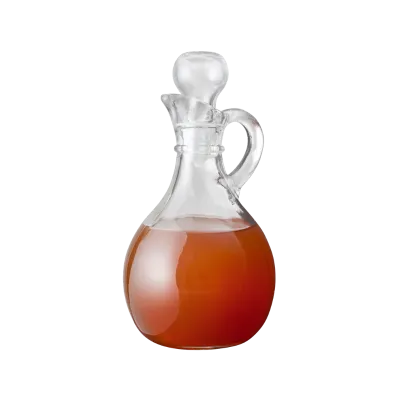
Preservatives can also be categorized as natural or artificial. Natural preservatives are derived from natural sources and include substances like vinegar, salt, and certain essential oils. These tend to be favored by consumers looking for minimally processed foods. On the other hand, artificial preservatives are synthetic and often more potent, allowing for longer shelf life.
| Type | Examples | Commonly Found In |
|---|---|---|
| Natural Preservatives | Vinegar, salt, sugar | Pickles, cured meats |
| Artificial Preservatives | BHA, BHT, sodium benzoate | Packaged snacks, sauces |
Both types serve essential roles in ensuring food safety and extending shelf life, but their acceptance varies among consumers. To learn more about various aspects of preservatives and their implications, explore our article on natural additives.
You Might Also Like:
Importance of Food Preservation
Understanding the importance of food preservation is essential in today’s world, where processed food is a significant part of people’s diets. Preservatives play a crucial role in ensuring food safety, extending shelf life, and maintaining the quality of food products.
Food Safety and Shelf Life
The primary function of preservatives is to enhance food safety by reducing the risk of foodborne infections and decreasing microbial spoilage. Preservatives prevent foods from spoiling and oxidizing quickly, which can lead to serious illnesses if consumed (MSU).
Preservatives not only protect consumers but also help in improving the convenience of food products. By extending the shelf life, preservatives play a key role in reducing food waste and lowering overall food costs. This contributes to a more effective food supply chain, ultimately ensuring that food remains safe for consumption longer.
| Function | Impact on Food |
|---|---|
| Reduce foodborne risks | Protects against harmful bacteria and pathogens |
| Decrease microbial spoilage | Helps in maintaining freshness and quality |
| Improve shelf life | Extends product availability |
Impact on Quality and Appearance
In addition to safety, preservatives help preserve the fresh attributes and nutritional quality of food. They maintain the texture, appearance, and flavor of products, positively influencing consumer experience.
Preserved foods tend to retain their color, aroma, and taste for longer periods. This not only enhances the visual appeal but also ensures a pleasant eating experience. The use of preservatives helps avoid spoilage, which can lead to unwanted changes in the product’s appearance.
| Food Quality Aspect | Effect of Preservatives |
|---|---|
| Color | Maintains vibrant appearance |
| Texture | Preserves desired consistency |
| Flavor | Retains taste and aroma |
As consumers become increasingly aware of the ingredients in their food, the impact of preservatives on quality leads to growing public demand for natural additives. For further insights into the types of additives, you can check out our article on organic additives. Additionally, understanding how to read food labels can provide clarity on which preservatives are used in daily food items.
Use of Preservatives in Different Sectors
Preservatives play a crucial role beyond just food preservation. They are widely utilized in various industries, including food, pharmaceuticals, and cosmetics, due to their effectiveness in preventing spoilage and maintaining product quality.
Food Industry
In the food industry, preservatives are essential for preventing spoilage caused by microorganisms such as bacteria, yeast, and molds. These additives help ensure the safety of high-risk foods like meat, seafood, dairy, and cheese. By inhibiting microbial growth, preservatives reduce the risk of foodborne illnesses, including serious conditions like botulism. They also mitigate degradation due to chemical or physical factors, ensuring that food retains its taste, appearance, and overall quality (EUFIC).
| Type of Preservative | Function |
|---|---|
| Antimicrobial | Prevents growth of bacteria and molds |
| Antioxidant | Maintains freshness and prevents oxidation |
The use of preservatives is tightly regulated, with comprehensive labeling systems in place to inform consumers about products containing these additives. This regulation is essential for maintaining consumer trust and ensuring the safe use of food additives (EUFIC).
Pharmaceutical Industry
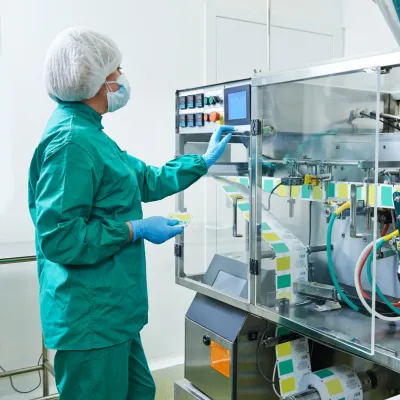
In the pharmaceutical sector, preservatives maintain the stability and effectiveness of medications. They prevent bacterial growth and ensure that pharmaceutical products have a longer shelf life. Commonly used preservatives in this industry include parabens and phenol derivatives, which help to protect liquids and creams from microbial contamination.
The regulatory standards for preservatives in drugs are stringent and closely monitored to protect consumer health. Ensuring that pharmaceutical products remain effective and safe over time is critical to patient safety and treatment outcomes.
Cosmetics Industry
Preservatives are equally vital in the cosmetics industry. They protect products, including lotions, creams, and makeup, from microbial contamination, which could otherwise lead to spoilage and potential health risks for users. Ingredients such as phenoxyethanol and methylparaben are commonly used to extend the shelf life of cosmetic products and maintain their quality.
Preservatives help prevent changes in the texture, odor, and effectiveness of beauty products, contributing to a positive consumer experience. Regulatory frameworks ensure that the preservatives used in cosmetics are safe at the concentrations allowed.
Preservatives across these sectors highlight their significant role in maintaining product safety, quality, and functionality. While many consumers are concerned about the presence of chemical additives in their products, it is essential to recognize that preservatives contribute to food safety, product stability, and overall consumer satisfaction. For more on additives, check out our articles on controversial food additives and natural additives.
Health Implications of Preservatives
The growing concern regarding the content of processed food has brought attention to the role of preservatives. While these substances are used to enhance shelf life and prevent spoilage, understanding their safety regulations and potential health risks is essential.
Safety Regulations and Concerns
Food preservatives are subject to strict safety regulations imposed by organizations like the FDA. These regulations aim to ensure that the preservatives used in food products are not harmful to human health. However, recent legislative actions, such as the California Food Safety Act passed in October 2023, have focused on banning certain chemical additives deemed toxic, including red dye 3 and brominated vegetable oil (BVO) (Food Safety Magazine). This act highlights the public’s growing concern about the safety of chemical additives in food and the need for continuous assessment of their health implications.
The lack of comprehensive safety data for some preservatives presents challenges in regulation. For instance, studies have linked sodium benzoate, a synthetic preservative, with cellular damage and potential teratogenic effects, leading to heightened scrutiny from health experts (NCBI). Other artificial additives, like BVO, have raised alarms due to their links to thyroid damage, prompting regulatory bodies to reevaluate their safety profiles.
Common Preservatives and Health Risks
Various preservatives are commonly used in food products, each presenting unique health risks. Below is a table summarizing some prevalent preservatives, their common uses, and associated health concerns:
| Preservative | Common Uses | Health Risks |
|---|---|---|
| Sodium Benzoate | Food, medicine, cosmetics | Cellular damage, potential teratogenicity |
| BVO (Brominated Vegetable Oil) | Soft drinks, emulsifiers | Thyroid damage, toxicological data gaps |
| Aspartame | Sweeteners in diet products | Brain damage, growth retardation, abnormalities |
| Artificial Dyes (e.g., Tartrazine) | Snack foods, beverages | Hyperactivity in children, potential long-term effects |
The potential health risks associated with these preservatives underscore the importance of reading food labels and being informed about what is consumed. Consumers increasingly demand transparency and prefer natural additives over artificial options that may present health risks. As awareness around food safety grows, so does the public’s desire for minimally processed foods free from controversial additives. For more information on common food additives and their impacts, refer to our article on controversial food additives.
Emerging Trends in Preservative Use
The landscape of food preservation is evolving as consumers become more informed and concerned about the ingredients in their processed foods. This has led to a noticeable shift towards natural preservative technologies and a growing demand for minimally processed foods.
Natural Preservative Technologies
Natural preservatives have gained popularity in recent years due to their derived sources, which include bacteria in soil, plants, animals, fungi, and common kitchen staples like salt and sugar. These natural additives are utilized alongside synthetic preservatives to enhance the safety and shelf-life of processed products.
Some commonly used natural preservatives include:
| Natural Preservative | Source |
|---|---|
| Salt | Common seasoning |
| Sugar | Common kitchen staple |
| Vinegar | Fermented liquid |
| Citric Acid | Citrus fruits |
| Rosemary Extract | Plant-derived |
These natural options not only serve to prevent spoilage but also align with consumer preferences for healthier and less processed food alternatives.
Public Demand for Minimally Processed Foods
There is an increasing public demand for minimally processed foods as consumers become aware of potential health risks associated with synthetic preservatives. People are seeking transparency in food labeling and are more inclined to purchase products with fewer artificial ingredients. This trend is driving many food manufacturers to reformulate their products using more natural additives (ScienceDirect).
This shift towards minimally processed options not only addresses health concerns but also contributes to sustainability by reducing food waste. Preservation techniques using natural preservatives help ensure food safety while maintaining the quality of foods and beverages. Consequently, this trend aids in lowering food costs, making safe and nutritious food more accessible to consumers.
In summary, the emergence of natural preservative technologies and the demand for minimally processed foods reflect a significant change in consumer preferences. As knowledge regarding food additives evolves, the industry is likely to continue adapting to meet these new expectations. For more insights about food ingredients, consider reading our articles on natural additives, organic additives, and controversial food additives.
What are food preservatives, and why are they used?
Food preservatives are substances added to food products to prevent spoilage and extend their shelf life. They help maintain the safety, quality, and nutritional value of food by inhibiting the growth of harmful microorganisms and delaying the natural decay process.
What are the main types of food preservatives?
Food preservatives can be categorized into two main types: antimicrobial preservatives, which prevent the growth of bacteria, yeast, and molds, and antioxidant preservatives, which protect food from oxidation and spoilage. Examples include lactic acid, nitrites, ascorbic acid (Vitamin C), and tocopherols (Vitamin E).
Are natural preservatives safer than artificial preservatives?
Natural preservatives, such as vinegar, salt, and sugar, are often perceived as safer by consumers because they are derived from natural sources. However, both natural and artificial preservatives play essential roles in food safety, and their safety depends on their use and the amounts consumed.
How do preservatives contribute to food safety?
Preservatives enhance food safety by reducing the risk of foodborne illnesses caused by harmful microorganisms. They also help maintain the quality of food by preserving its taste, appearance, and texture, thereby extending its shelf life and reducing food waste.
What are some common health concerns associated with food preservatives?
Certain synthetic preservatives, such as sodium benzoate and brominated vegetable oil (BVO), have been linked to potential health risks, including cellular damage, thyroid issues, and hyperactivity in children. However, these risks are typically associated with excessive consumption or specific sensitivities.
How are food preservatives regulated?
Food preservatives are regulated by organizations like the FDA in the United States, which sets safety standards and conducts evaluations to ensure that preservatives used in food products are safe for consumption. Recent legislative actions, such as the California Food Safety Act, have further tightened regulations on certain chemical additives.

